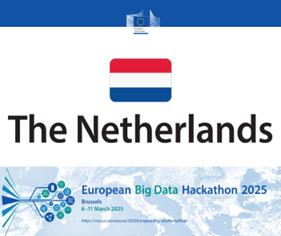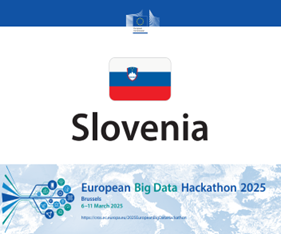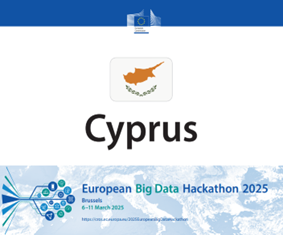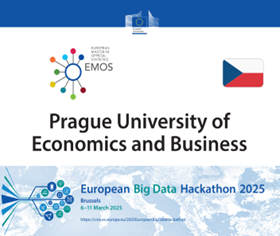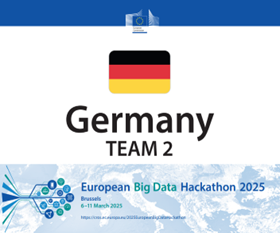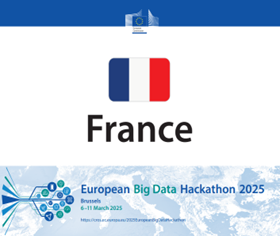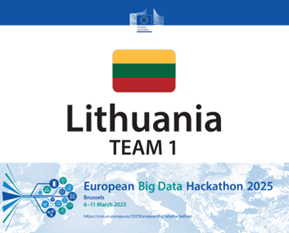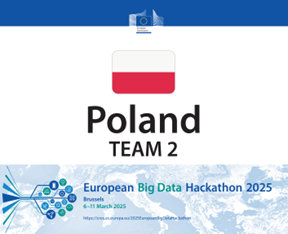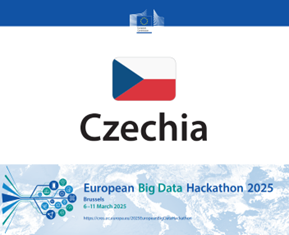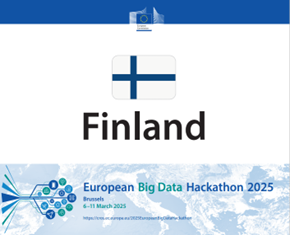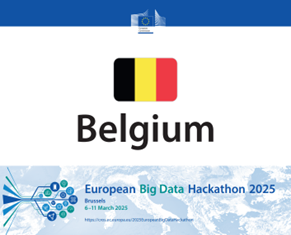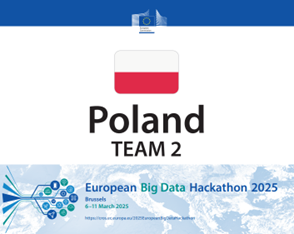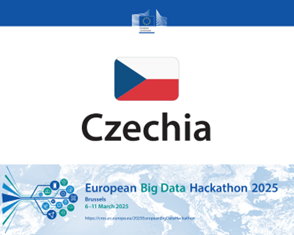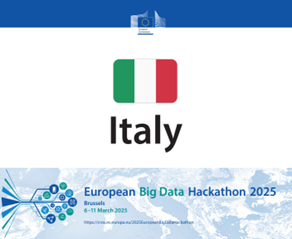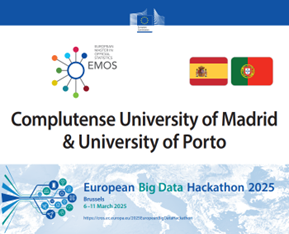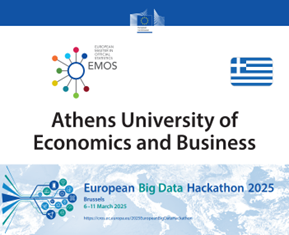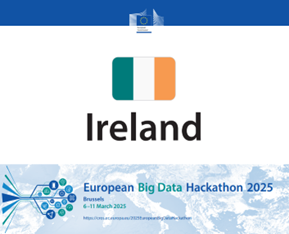
VIDEO RECORDING
Hackathon pitching: https://webcast.ec.europa.eu/ntts-2025-conference-mans-2025-03-10
NTTS hackathon awards session: https://webcast.ec.europa.eu/ntts-2025-conference-gasp-2025-03-11  (from 10:30 to 12:00)
PROGRAMME AND BOOKLET
EUROPEAN BIG DATA HACKATHON 2025
The purpose of the 2025 hackathon was to foster expertise in integrating Earth Observation data with official statistics for producing innovative ideas for statistical products and tools relevant for the EU policies.
The fifth round of the European Big Data Hackathon was organized in close collaboration with the Directorate-General for Defence Industry and Space (DG DEFIS) of the European Commission and the European Space Agency (ESA), and the service team: CloudFerro, Sinergise and Vito, utilising the Copernicus Data Space Ecosystem (CDSE) and CREODIAS.
For more information on the hackathon challenge, the winners and participants of the 2025 European Big Data Hackathon and solutions they devised in the competition, please see below.
2025 European Big Data Hackathon: Data challenge
‘In the 2025 hackathon, the teams were challenged to devise a dashboard based on the CDSE data; for specifics, please see below the data challenge as announced to the teams:’
Develop an interactive dashboard featuring a geospatial statistical indicator(s), addressing EU policy needs of your choice. The indicator(s) should be computed on the basis of Earth Observation data (from the Copernicus Data Space Ecosystem), auxiliary data made available through the hackathon platform, European statistics and - if needed - augmented with your own datasets for which equivalents exist in other EU countries.
The dashboard should enable to present the data over time and at regional level across the EU. Ideally, it would be able to be integrated with existing indicators/variables from the statistical acquis. For more specific instructions see below:
Develop a dashboard - the interactive dashboard will have:
- the cartographic representation of the indicator(s)
- tabular data as output,
- option to generate graphs (where relevant).
Geospatial statistical indicator – it can be:
- an existing indicator, currently measured with traditional (surveys/administrative) data sources, is to be calculated under the hackathon project fully or partially based on Earth Observation data,
- the improvement of an existing indicator with the help of Earth Observation data (e.g. increasing the timeliness or shortening the time lag with which the data can be released, improving coverage) or
-
a completely new one.
Data available and own data to be used in the hackathon - please see the datasets listed in the hackathon data catalogue document: https://eurostat.github.io/eubd2025_docs
Geographical scope - covering at least 1 NUTS 3 region in at least 2 Member States. The indicator can be at various geographical levels from 1km grid or NUTS3 which can be aggregated to country and even EU level.
Temporal scope - compare at least 2 different moments in time

WINNERS OF THE 2025 EDITION
All solutions proposed by hackathon teams were evaluated based on five criteria: relevance for specific policy use(s), methodological soundness, communication, innovative approach and replicability.
Following the evaluation process, six solutions proposed by hackathon teams were awarded with trophies.
For the six teams that won the 2025 European Big Data Hackathon, and information on the winning applications, see below.
Please note that the Hackathon Team of EMOS Prague won two prizes: the Hackathon 4th place trophy and EMOS Prize.
TEAM |
|
WINNING HACKATHON PROJECTS |
|
1st place
|
AIR INEQUITY DASHBOARD The Team's dashboard provides insights on pollution and socioeconomic disparities, specifically focusing on how air pollution in Europe worsens health inequalities, hitting vulnerable groups the hardest. The dashboard aims to show the unequal impacts of air pollution and the EU policies in place to reduce it, such as the Ambient Air Quality Directive and the Zero Pollution Action Plan 2030 NTTS SLIDES: Air inequity dashboard |
|
|
2nd place
|
LAND PULSE EU: IMPERVIOUS LAND FOOTPRINT The Team’s project provides a high-level EU-wide tool for sustainable urban planning and informed decision making by measuring the efficiency of land utilization. It deploys automatic impervious land classification using deep learning and Copernicus Sentinel-2 data to create an impervious land layer. The project covers the EU area and provides annual data from 2017 to 2024, incorporating various statistical data from Eurostat. NTTS SLIDES: Land pulse EU: impervious land footprint |
|
|
3rd place
|
THE AIR OUT THERE - T.A.R.O.T. The Air Out There – T.AR.O.T’; the team’s dashboard visualizes premature deaths due to PM2.5 with a higher temporal and spatial resolution. It utilizes the Copernicus Atmospheric Data Store, including CAMS European Air Quality Reanalyses and Forecasts, to investigate correlations and provide insights into air quality NTTS SLIDES: The air out there - T.A.R.O.T
|
|
|
4th place and Emos prize
|
ICE NAD OPEN WATER ANALYSIS FOR NORWAY FJORD AND FINLAND LAKE USING SENTINEL-1 IW The Team’s interactive dashboard uses Sentinel-1 IW data to monitor ice conditions in Norway Fjord and Finland Lake, with three indicators: Ice Coverage Index, Ice Thickness Variability, and Ice Temporal Stability. The goal of the tool is to enhance climate monitoring and enable data-driven policies for Arctic sustainability and economic impact assessments by integrating ice metrics with Eurostat's environmental datasets NTTS SLIDES: Ice nad open water analysis for Norway Fjord and Finland lake using sentinel-1W |
|
|
5th place
|
EU QUOKKA - A LOCAL QUALITY OF LIFE FOR THE EU EU Quokka - A Local Quality of Life Tracker for the EU; the team’s dashboard that - based on Earth Observation data - provides indicators for the local quality of life, e.g., local access to greenery and local air pollution, with a very fine resolution (1km x 1km) PITCHING SLIDES: EU Quokka- A Local Quality of Life Tracker for the EU
|
|
|
6th place
|
ARTIFICIALIZATION WITH THE CORINE LAND COVER+ (CLC+) The team’s dashboard helps to monitor a rise in imperviousness understood as the disappearance of natural spaces under concrete or bitumen. It has been built on the CLC+ Backbone: CLMS Data Viewer PITCHING SLIDES: Artificialization with CLC+
|
TEAMS' PRIZES
At the 2025 European Big Data Hackathon, participants from all teams had the opportunity to cast their votes for the most outstanding solutions presented by their peers across three categories: Best Idea (recognizing the most interesting concept), Best Hack (honoring the most impressive technical implementation), and Best Pitch (awarding the most compelling and engaging presentation delivered during the pitching session). We are pleased to announce the winners of these Teams' awards:
TEAM |
|
WINNING HACKATHON PROJECTS |
|
PRIZE: "BEST IDEA"
|
SPACE PLANTER The team’s dashboard explores surface temperature and moisture to determine best locations for specific crop planting. The dashboard can also be used for climate change monitoring purposes. Link to the pitching recording: https://webcast.ec.europa.eu/ntts-2025-conference-mans-2025-03-10 (from 11:45-11:54)
|
|
|
PRIZE: "BEST HACK"
|
FLOODWATCH The team produced an interactive web app to view historical flood data in Poland and the Czech Republic PITCHING SLIDES: FloodWatch
|
|
|
PRIZE: "BEST PITCH"
|
HEAT IN THE CITY The team’s interactive dashboard zooms into specific cities (classified as DEGURBA = 1) and displays data on NDVI (Normalized Difference Vegetation Index) and temperature (in maps and over time) PITCHING SLIDES: Heat in the City; |
PITCHING PRESENTATIONS
All Teams participating in the 2025 European Big Data Hackathon (in the pitching order)
TEAMS |
HACKATHON PROJECTS |
||
|
|
AirX – Team Finland; The Team's project offers the eye on the sky for covering the good quality of life of the European citizens PITCHING SLIDES: NSI_Team_FI_presentation; |
||
|
|
Corine Land Cover Change Tracker (CLC-CT); The Team's project provides provides a tool for a yearly change detection in Corine Land Cover classification PITCHING SLIDES: NSI_Team_BE_presentation; |
||
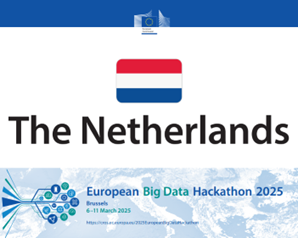 |
Air Inequity Dashboard; The Team's dashboard provides insights on pollution and socioeconomic disparities, specifically focusing on how air pollution in Europe worsens health inequalities, hitting vulnerable groups the hardest. The dashboard aims to show the unequal impacts of air pollution and the EU policies in place to reduce it, such as the Ambient Air Quality Directive and the Zero Pollution Action Plan 2030 PITCHING SLIDES: NSI_Team_NL_presentation; |
||
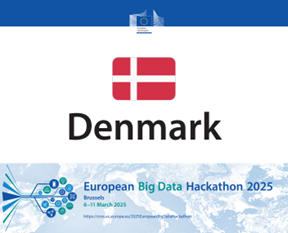 |
Flood Analytics: Satellite Data Meets Population Density; The Team's project aimed to identify flood-prone areas, comparing it with the population affected in a flooding event PITCHING SLIDES: NSI_Team_DK_presentation: |
||
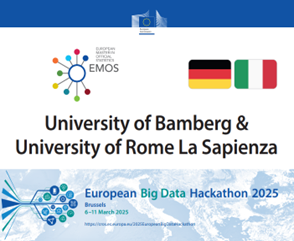 |
Interactive Hazard Prediction Dashboard; The Team's tool provides insights on the area vulnerability to hazards with Adjustable Area Characteristic using the example of fire PITCHING SLIDES: NSI_Team_EmosBamberg_presentation
|
||
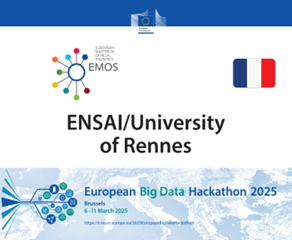 |
The Team's project proposed a tool for for Earth monitoring and econometric analysis PITCHING SLIDES: NSI_Team_ENSAI_presentation |
||
 |
Composite index -Environmental and Community Observation System (ECOS) The Team's prototype sought to provide a country score through an yearly composite index (at NUTS2 and NUTS3 levels), for assessing the past and current progress track record in reaching a selection of SDG indicators, such as drought estimates, health vegetation indices, forest coverage, air quality and metrics. PITCHING SLIDES: NSI_Team_Ro_presentation |
||
|
|
The team produced an interactive web app to view historical flood data in Poland and the Czech Republic. PITCHING SLIDES: NSI_Team_PL_presentation |
||
|
|
The team’s interactive dashboard zooms into specific cities (classified as DEGURBA = 1) and displays data on NDVI (Normalized Difference Vegetation Index) and temperature (in maps and over time) PITCHING SLIDES: NSI_Team_CZ_presentation
|
||
|
|
GREEN-PoP Green Recognition Evaluation European Network Population Prospects] The Team's project aimed to describe 28 major urban areas, for two different years (2018 and 2021), across the continent in relation to the presence of vegetation capable of providing adequate ecosystem services to the local population PITCHING SLIDES: NSI_Team_IT_presentation |
||
|
|
Water pollution from a river basin perspective Using historical land use information and the river stream flow, the Team's project sought to predict the current status of water pollution PITCHING SLIDES: NSI_Team_MadridPorto_presentation |
||
|
|
HHAPI - Heat-Humidity-Air Pollution Index with Satellite Data Using various Satellite data, the Team sought to create an index showing the discomfort that one can have due to heat/humidity and smoke/dust in the air PITCHING SLIDES: NSI_Team_Athens_presentation |
||
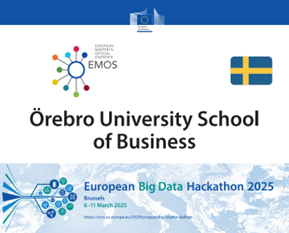
|
Rapid Thorough Deforestation impact on Chlorophyll concentration The Team's project sought to investigate the connection between the deforestation and the chlorophyll levels in certain areas PITCHING SLIDES: NSI_Team_Orebro_presentation |
||
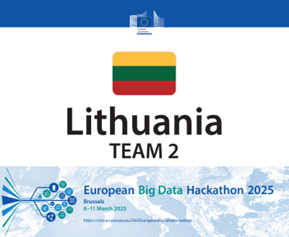
|
Findme Shelter; The Team's project proposes a framework to calculate a new index: indentifying "official" shelters out of all potential shelters available, as calculated by a model which detects buildings that could be potential shelters. Ortho pictures are used with image segmentation model to detect buildings and expand open-data building vectors. |
||
|
|
Observing and Identifying changes in permanent grassland using Sentinel 2 NDVI The Team's project proposes a shiny interactive map of land parcels across South-east Ireland and Corèze, France. The land parcels are annotated by when the change in grassland is identified, frequency of bare land observations and possible change in use to cropland. Data is examined from 2018 to 2023 PITCHING SLIDES: NSI_Team_IE_presentation |
||
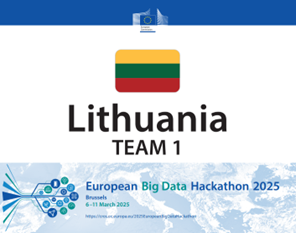
|
Space Planter; The team’s dashboard explores surface temperature and moisture to determine best locations for specific crop planting. The dashboard can also be used for climate change monitoring purposes |
||
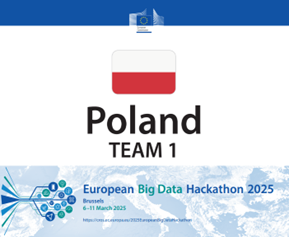
|
MEA CULPA – Monitoring Ecosystem Accounts: Counting Usable Life Progress Analysis "The Team's prototype is a Python‐based tool designed to automate the compilation of ecosystem extent accounts, following the methodological framework and reporting requirements outlined in the Eurostat guidance note (December 2023). PITCHING SLIDES: NSI_Team_PL1_presentation |
||
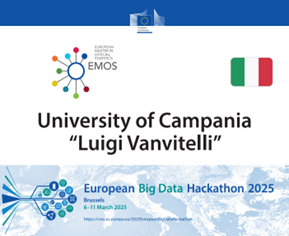
|
Health-Adjusted Air Quality Index (HAQI) "The Team's interactive dashboard with an index based on daily data for five pollutants (CO, NO2, SO2, PM2.5, PM10), as well as daily NDVI values for each region. For each pollutant and region, the system counts how many days the pollutant concentration goes above the hazard limit defined in DIRECTIVE (EU) 2024/2881." PITCHING SLIDES: NSI_Team_EmosVanvitelli_presentation |
||

|
Ice and Open Water Analysis for Norway Fjord and Finland Lake using Sentinel-1 IW The Team’s interactive dashboard uses Sentinel-1 IW data to monitor ice conditions in Norway Fjord and Finland Lake, with three indicators: Ice Coverage Index, Ice Thickness Variability, and Ice Temporal Stability. PITCHING SLIDES: NSI_Team_EmosPrague_presentation |
||

|
"The Team’s dashboard visualizes premature deaths due to PM2.5 with a higher temporal and spatial resolution. It utilizes the Copernicus Atmospheric Data Store, including CAMS European Air Quality Reanalyses and Forecasts, to investigate correlations and to provide insights into air quality." PITCHING SLIDES: NSI_Team_CY_presentation |
||
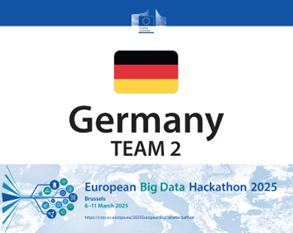
|
EU Quokka- A Local Quality of Life Tracker for the EU Based on Earth Observation data, the Team's dashboard provides, with a very fine resolution (1km x 1km), indicators for the local quality of life, e.g., local access to greenery and local air pollution PITCHING SLIDES: NSI_Team_DET2_presentation |
||
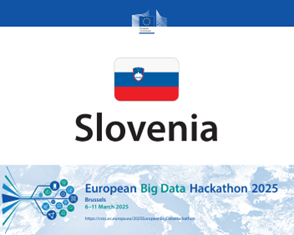
|
The Team’s project provides a high-level EU-wide tool for sustainable urban planning and informed decision making by measuring the efficiency of land utilization. It deploys automatic impervious land classification using deep learning and Copernicus Sentinel-2 data to create an impervious land layer. PITCHING SLIDES: NSI_Team_SL_presentation |
||
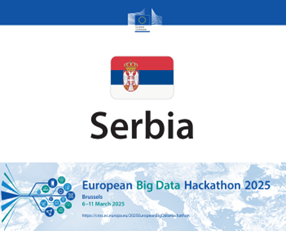
|
The Team's project proposed an index which measures the resilience of the vegetation using Copernicus data PITCHING SLIDES: NSI_Team_SR_presentation |
||
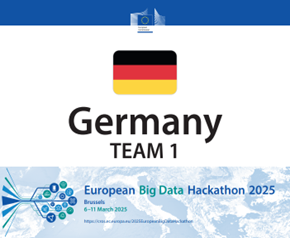
|
A Dashboard for Monitoring Small Woody Features on Agricultural Land "The Team's prototype is an adjustable dashboard, in which the user can choose a NUTS3 region of interest and see map feature showing the amount of hedges in the region and agricultural land." PITCHING SLIDES: NSI_Team_DE1_presentation |
||
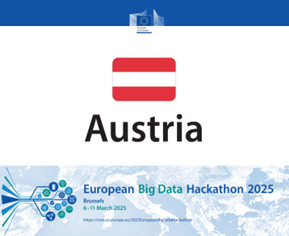
|
STRESS - Sentinel Tool for Regional Ecosystem Stress Screening The Team's project provides a tool for forest health monitoring in real time. The tool calculates a stress indicator comparing the most recent readings with past averages fpr several indicators (e.g. temperature. vegetation indices, precipitation, solar radiation could be used) PITCHING SLIDES: NSI_Team_AT_presentation |
||

|
Summer in the city: environmental hazards for the elderly The Team's project presents various indicators of environmental hazards for the elderly in the summer for Estonia (Tartu) and Belgium (Brussels) PITCHING SLIDES: NSI_Team_EE_presentation |
||
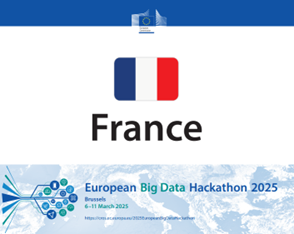
|
The team’s dashboard helps to monitor a rise in imperviousness understood as the disappearance of natural spaces under concrete or bitumen. It has been built on the CLC+ Backbone: CLMS Data Viewer PITCHING SLIDES: NSI_Team_FR_presentation |
KEY DATES
The Hackathon took off on
6 March 2025 with the announcement of the challenge, and closed on
10 March 2025 with a pitching session at which the teams presented their solutions.
The winners were awarded on
11 March 2025, at the first day of the NTTS 2025, where they had the opportunity to present their solutions more in detail.
PRACTICAL INFORMATION
For points relating to logistics and/or questions on hackathon procedures, please contact our functional mailbox:
WHAT IS A HACKATHON?
Data hackathons, also known as data dives, are intense events where teams of data scientists, IT experts and project managers try to creatively tackle data problems and prototype data analytics products.
Data hackathons last between a day and a week, and they tend to have a specific focus, which can include specific data sources, methodologies, technologies and applications.
WHAT IS THE PURPOSE?
The European Big Data Hackathon has three main objectives
- To solve statistical problems, by leveraging algorithms, exploring novel, big and open data sets as potential sources for official statistics, and by engaging with practitioners, developers and data scientists across Europe;
- To devise innovative products and tools, including for data visualisation, to stimulate the use of open data and public use files and to engage with new audiences and users;
- To promote partnerships with research community and private sector, by raising awareness about big data developments in Official Statistics in Europe and by initiating and reinforcing collaboration with the private sector and universities in this field.
27 TEAMS FOR THE 2025 EDITION
LINKS TO PAST EDITIONS
2023 edition: EUROPEAN BIG DATA HACKATHON 2023 | CROS
Link to the hackathon pitching: https://webcast.ec.europa.eu/hackathon-pitching-20230306)
2021 edition: European Big Data Hackathon
2019 edition: NTTS 2019 - Big Data Hackathon
2017 edition: European Big Data Hackathon 2017.

